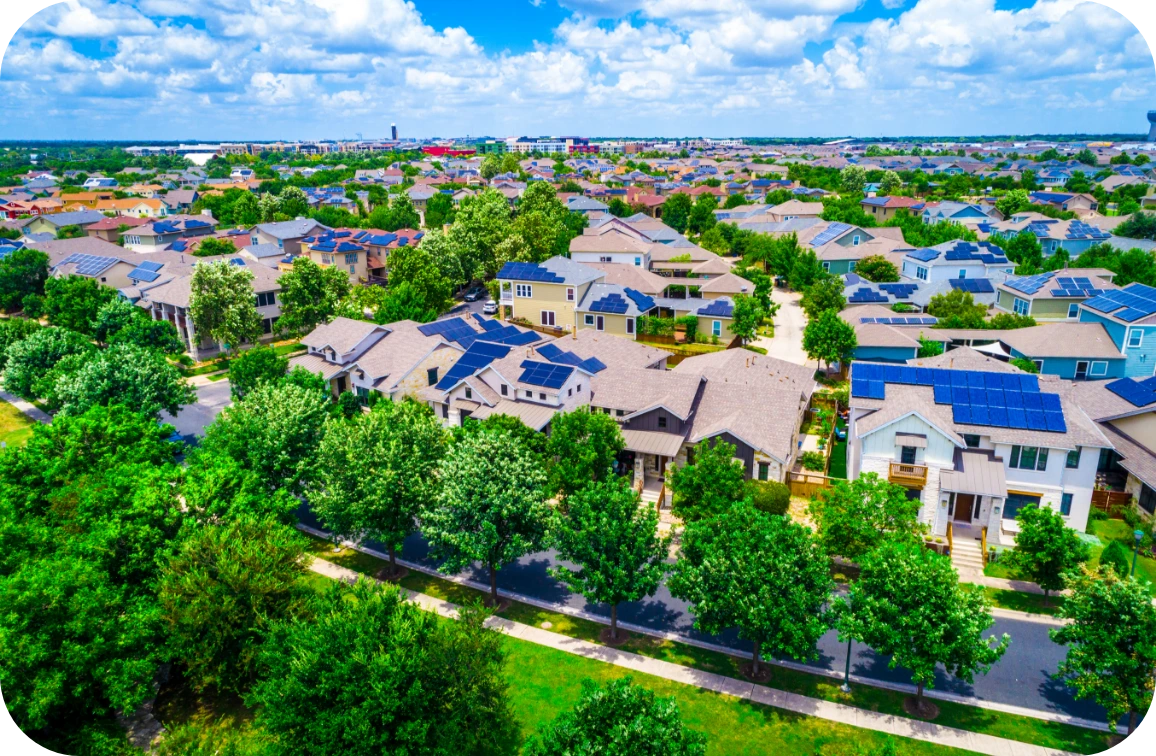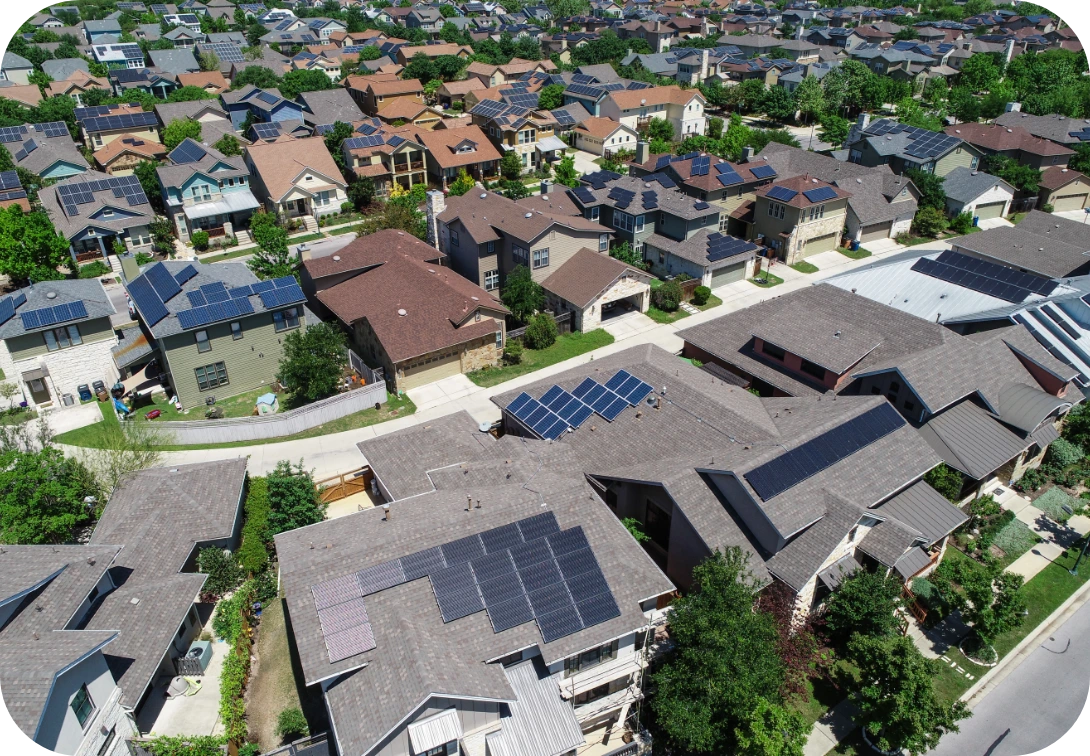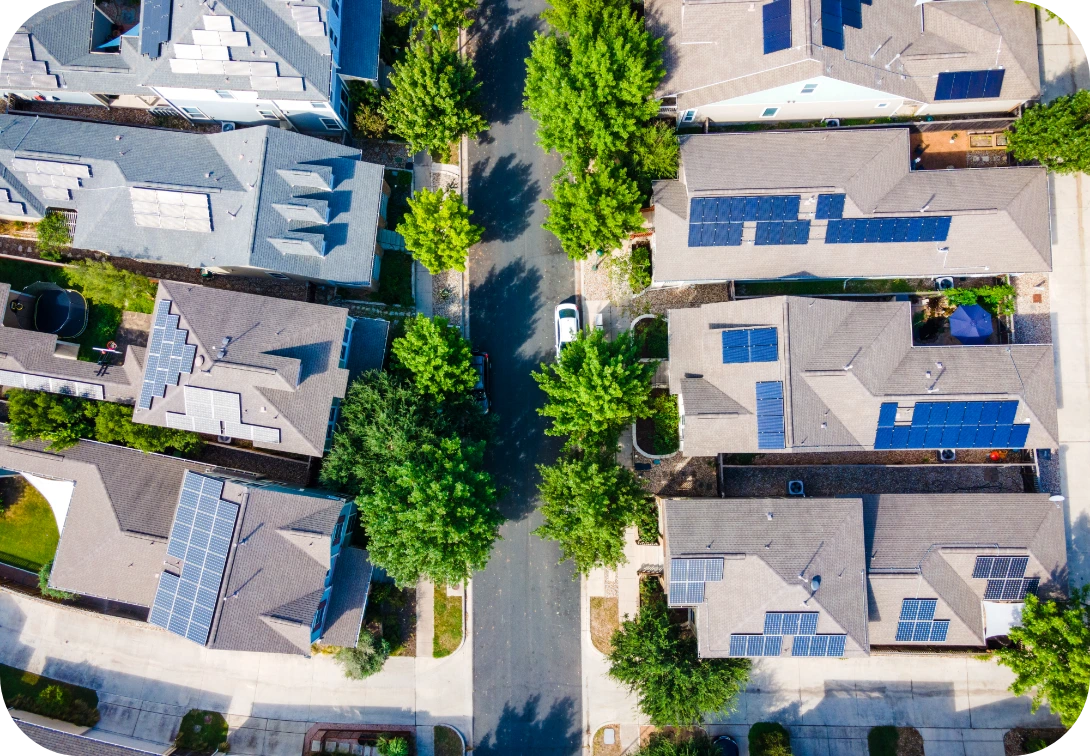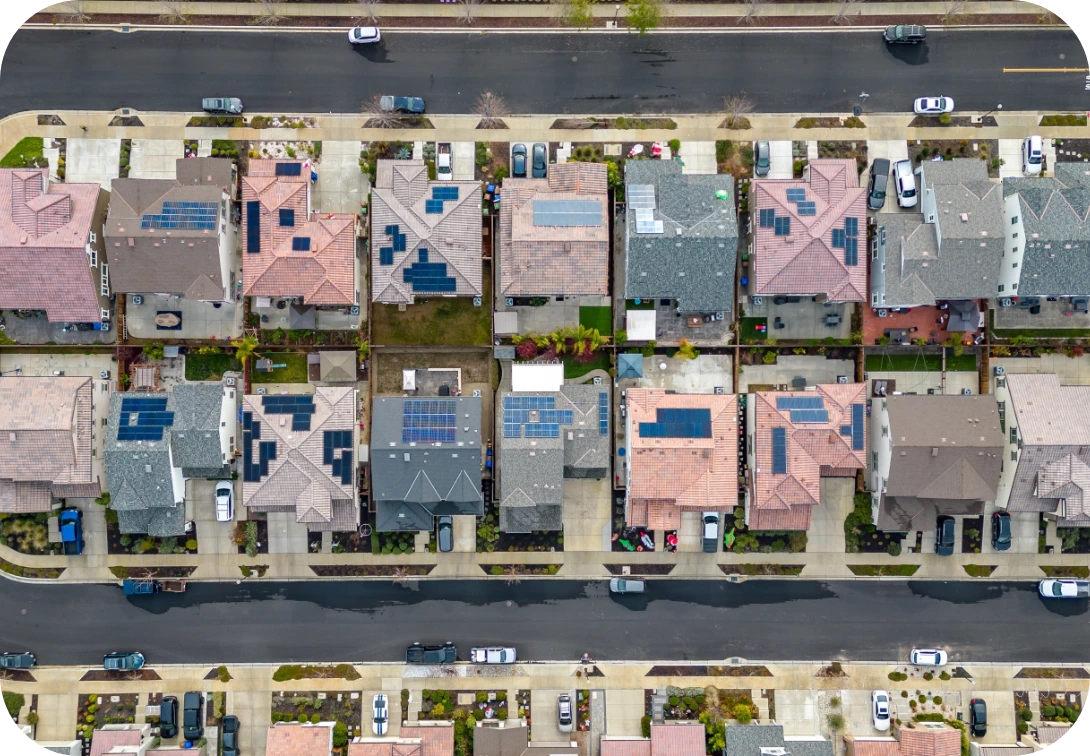Basics Of Community Solar

Home solar systems continue to grow in popularity worldwide, but many people don’t know there is another option — community solar. This option is an innovative approach to large-scale solar energy and could be an ideal solution for those who aren’t ready or able to install solar panels on their home.
Read on to learn more about what community solar is, how it works, and the advantages and disadvantages to see if this option is right for you.
What Is Community Solar
Community solar programs allow residents, homeowners, and local businesses to take advantage of a collective solar system. Where traditional solar panel systems require property ownership and ideal sunlight conditions for panel installation, community solar allows anyone in the community to enjoy the benefits of solar energy without ownership or location restrictions.
Taking this approach to accessible solar energy is an excellent way to promote sustainability, boost community engagement, and reduce a carbon footprint on a larger scale. As an added benefit, community solar is a more inclusive and environmentally friendly option for cities and towns that want to work toward a greener future.


How Does Community Solar Work?
Community solar starts with a city or town that is interested in a better energy solution. From there, they’ll need to build community solar farms in areas with ample sunlight. A third-party company would be responsible for installing and maintaining these solar farms for the rest of the community. Residents can subscribe or purchase to join the program; then, they will receive a portion of the solar energy generated on the farm.
There’s no need to install solar panels on individual properties since it’s all done at community solar farms, and the system is entirely scalable as communities grow.
What Model of Community Solar is Right for You?
When deciding whether to join community solar programs, it’s essential to understand the available options. Currently, community solar is offered as an ownership-based or subscription-based project. Here are the differences between the two.
Ownership-Based Projects
Ownership-based community solar allows participants to buy into the program, becoming active owners in the project. An owner has the added advantage of potential financial benefits, including tax incentives, dividends, and reduced utility bills. This type of community solar is ideal for people who want a more hands-on, active role in their energy usage.
Subscription-Based Projects
Subscription-based community solar is a more hands-off, hassle-free approach to solar energy. Participants sign a contract — a power purchase agreement — that lets them pay a specific monthly amount for access to the energy generated by community solar farms. This community solar program is best suited for those who want the ease and simplicity of solar energy without the involvement of an ownership-based program.
What are the Benefits of Community Solar?
Just as a home solar system provides many benefits for homeowners, community solar offers several benefits for a large population in one area. Participants can enjoy financial, customer, utility, and environmental advantages when participating in this energy approach.

Financial
Switching to solar energy means homeowners can use less grid electricity. Over time, this could reduce home energy bills, saving money in the long run. For ownership-based community solar projects, there may also be additional tax incentives and dividends on the initial investment.
Customer
When residents join a community solar project, they get access to clean, renewable energy on a larger scale without having to install or maintain a solar system on their homes. Community solar has the added benefit of being available to anyone in the community, including renters and homeowners with homes unsuited for traditional solar panels.
And as long as a resident moves within the solar service area, they can transfer their community solar subscription or ownership to another property.
Utility Benefits
Customers aren’t the only ones who benefit from using solar energy. When cities implement community solar, they can reduce their dependence on power plants run by non-renewable fossil fuels. By having the option for both community solar and grid electricity, there is less strain on one source, especially during peak usage hours.
Environmental
Community solar helps boost sustainability by reducing greenhouse gas emissions and decreasing reliance on fossil fuels. Participating in community solar is a chance for every resident to work together toward a greener, more sustainable future.

What are the Disadvantages of Community Solar?
Community solar offers numerous benefits for those that take advantage of it. However, there are still a few disadvantages to going with this approach.
Geographic Limitations
For community solar to work, there needs to be immediate availability to a community solar farm. Unfortunately, this may not be a reality for some towns or cities, meaning community solar would not be an accessible option for them.
Capacity and Demand
Community solar is still a relatively new concept in the world of solar energy, and the capacity to install community solar farms may be limited if there isn’t enough space around an interested community. Additionally, as community solar programs grow in popularity, there could be higher demand than availability, meaning there could be a significant waitlist over time for all interested parties.
Policies and Regulations
While there are currently local, state, and federal rebates, incentives, and tax credits for personal solar systems, there are minimal programs for community solar. This lack of financial incentives could make community solar too expensive for some areas to install. There’s also the possibility that stricter regulations could be put in place in the future, limiting the accessibility and availability of community solar in most areas.
Limited Control
Unlike home solar systems, where the homeowner has total control over operating and maintaining the system, community solar is often managed by a third-party representative. This means that solar users would have less control over the performance of their panels as well as how efficiently they work.
How Much Solar Energy Might I Get?
Several factors could influence how much solar energy a participant may receive, including how large the community solar farm is, how much they own, or their subscription level. To get more energy, a person could buy a more significant share in the program or increase their subscription level since the amount of participation directly correlates to how much energy is received.

Differences Between Community Solar and Residential or Rooftop Solar
Choosing between community and rooftop solar will ultimately come down to a few factors, including personal preference, individual circumstances, and which options are available in the area. Community solar is more accessible and scalable, while rooftop solar offers complete ownership and total control over the system. While both options involve converting solar power into usable energy, there are a few other differences.
Residential or Rooftop Solar
Residential or rooftop solar requires putting solar panels on an individual property. While many properties in one area can have solar panels, they are not connected in any way, and any energy generated is only used by the property that created it.
Community Solar
Community solar comes from a solar farm, meaning all the panels are placed in one location instead of singular homes or businesses. Anyone in a specified service area can participate in the community solar program. However, they have to subscribe to or own part of the project to be able to participate.
Rooftop Solar
Rooftop solar is contained to the property that owns the panels, meaning it cannot expand to surrounding homes or businesses. Community solar can grow to accommodate new and interested residents.
Which Type of Solar Should I Get?
The type of solar you should get will depend on your needs, finances, and how much you want to be involved with your system. Whether you are considering ownership- or subscription-based community solar or even your own home solar system, the team at Axia is here to help. We can answer any questions you have, give you a system quote, and assist you in getting ideal solar energy for your situation. Contact our team to get started today.
FAQS
Frequently Asked Questions
Here is a frequently asked question about community solar.
SETO is continually striving to advance and improve community solar programs. They are actively investing in research, development, and funding to improve the performance, affordability, and accessibility of community solar